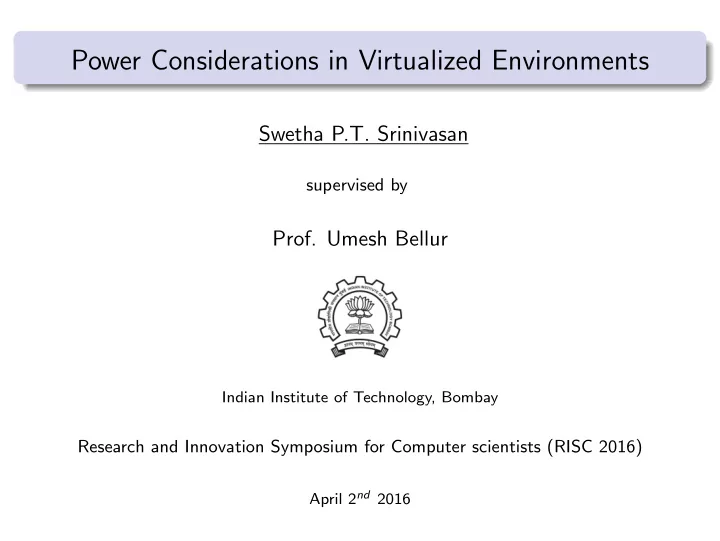

Power Considerations in Virtualized Environments Swetha P.T. Srinivasan supervised by Prof. Umesh Bellur Indian Institute of Technology, Bombay Research and Innovation Symposium for Computer scientists (RISC 2016) April 2 nd 2016
Background 1. Power consumption of a server P total = P static + P dynamic (Watts) 2. Energy consumption E = Σ t i =1 P ( i ) (Watt-hour) 3. Dynamic Voltage and Frequency Scaling (DVFS) - combination of voltage and f set for processor
Goal: Energy Optimal VM Provisioning Goal: Energy-optimally provisioning VMs on DVFS-enabled servers Ensure completion time SLAs are met
Where Existing Heuristics Fail 6 VMs need to be placed Best Fit Decreasing / First Fit Decreasing: ordering by CPU requirement size VM1 VM3 VM5 VM2 VM4 VM6 Idle VM# CPU% Time(s) 60 100 vm 1 (a) PM1 PM2 100 100 Power (W) 60 100 vm 2 75 75 50 50 200 30 vm 3 25 25 0 0 200 30 vm 4 0 100 200 300 400 0 100 200 300 400 Time (s) Time (s) 400 10 vm 5 400 vm 6 10 (b) PM1 PM2 PM3 100 100 100 Power (W) 75 75 75 85% energy; 50 50 50 More saving if 25 25 25 0 0 0 DVFS applied 0 100 200 300 400 0 100 200 300 400 0 100 200 300 400 Time (s) Time (s) Time (s) Hypothesis - tightest packing (least #servers) is not energy efficient for deadline-based provisioning.
Recommend
More recommend